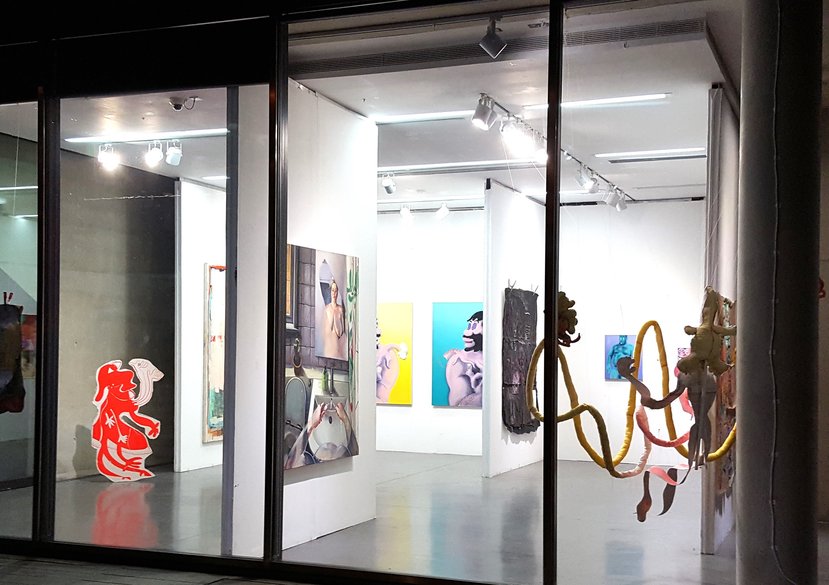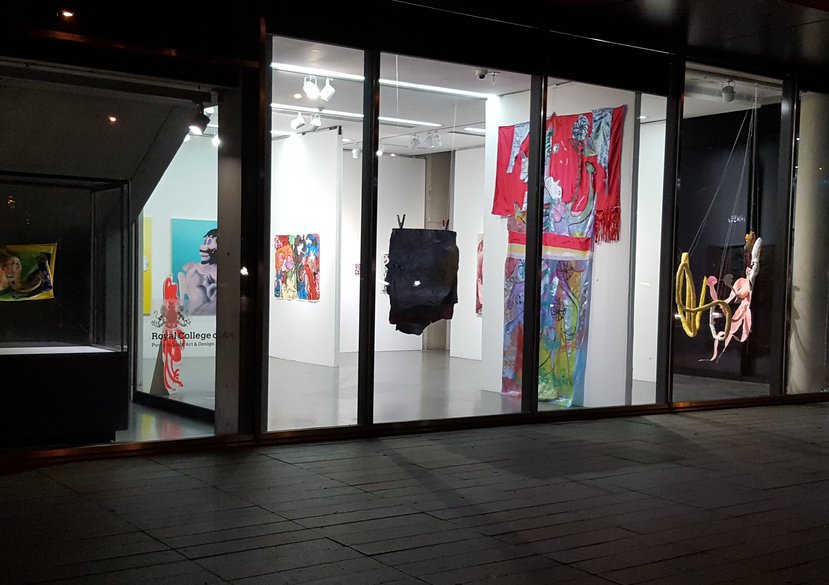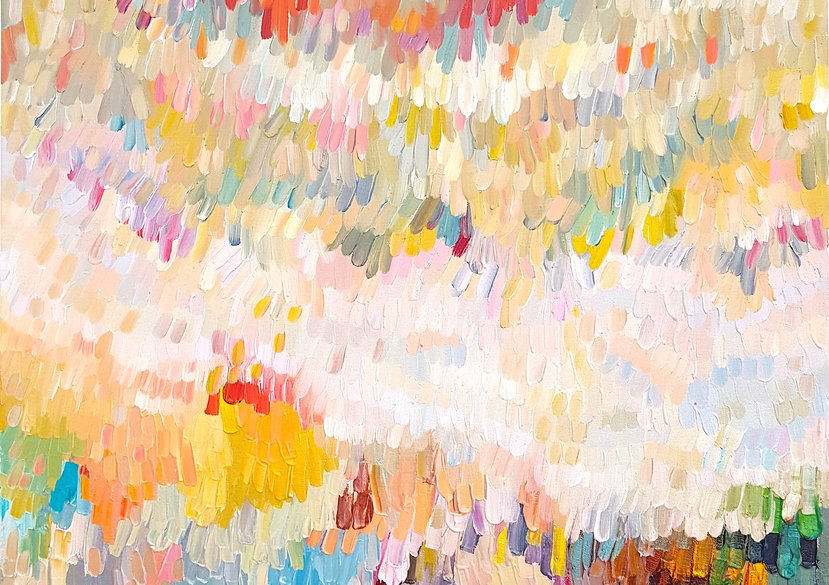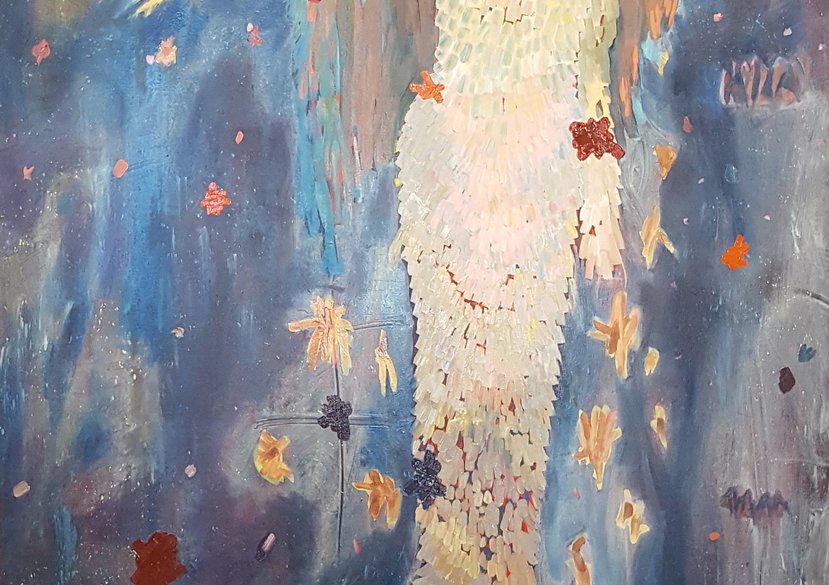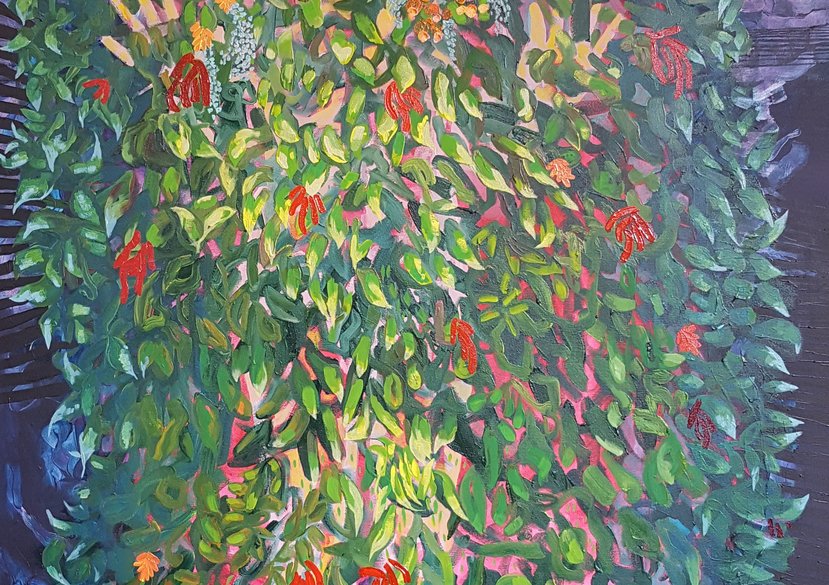
The Reparative Turn in Painting, Monstrous Interventions in Art and Identity Studies
‘Wicked problems’ in socio-political, climate, and economic spheres are on the rise, creating complex threats to survival. Additionally in spite of the many human rights gains achieved during recent decades, identity-based inequality and injustice persists disenfranchising some, while granting benefits to others, thus generating an escalating need for repair. This practice-led thesis researches through painting, discourse between painters, and study of painting to discover how narrative, visual, affective, empowering, and transmutative approaches in these practices become reparative by subverting or redressing damage caused by identity-based bias as well as engaging in worldbuilding imbued with hopeful futurities. In personal practice and through participatory action research (PAR), this project explores a multitude of reparative painting methods including; production of uplift, speculative work exploring imaginative optimistic futures, expression of wounded narratives, transfer of and/or realization of power, monstrous reclamations, beauty or rage, as well as working towards recovery from trauma. It researches how a reparative turn in painting can generate agency through a psychic/visceral reaching towards an exit from dynamics of identity-based exclusions. Painting provides an article as well as an action through which monsterizing processes of cultural production tied to identity are troubled as well as analysed materially, visually, and in encounter.
This thesis takes up Sedgwick’s call to further reparative reading approaches in research, then moves it further along by positioning painting and embodied practices, instead of reading, as the focus of inquiry hereby moving research beyond language, into material, performative, and encounter generated realms. The research offers findings discovered in studio interview fieldwork, personal studio practice, content transmutation, material aliveness, and conceptions of monstrous repair, then ties them together to demonstrate the multitude of ways these diverse modes work as reparative practices. The “Repair” chapter presents a kind of genealogy of reparative theories from psychoanalysis to queer theory. The “Painting from the Other Side” curatorial PAR chapter uses fieldwork based studio visit interviews to develop case studies of reparative painting in the practices of eight contemporary painters. These examples illuminate how contemporary painting practices move ambitions for repair from hope to theory, into paint, and later the public realm. The “Painting-Colour chapter offers further analysis of repair in contextual production by diffractively considering the dynamics of colour and culture through each other as well as how perception emerges in ever becoming encounters. Showing that just as deep blue can turn what appeared to be lavender, pink, cultural productions that monsterize some are just as malleable. The knowledge created here offers a new framework detailing how an embodied and diffractive methodological process can be used to create constructive and productive exits as well as generate agency formation with the capacity to provide release from and repair of the damage resulting from dynamics of othering or monsterizing.
